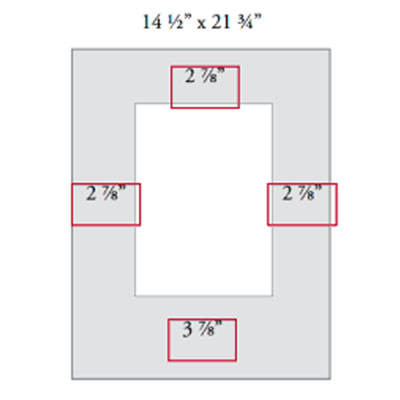Selecting colors can be one of the most gratifying parts of the picture framing process, but framers often feel adrift when it comes to designing around a piece of art. To make it easier, consider five areas as you choose: purpose, balance, value, temperature and theme.
Purpose
The first goal in designing for matting and framing is to satisfy the person you are framing for, which means that if your customer wants the framed piece to blend well with existing room décor you must factor that into your design. If your purpose is to present the art in an exposition, the show will usually have rules about how it should be framed. Absent all that, your purpose is to do justice to the art.
Balance
Seek balance between the art and the framing that surrounds it. Avoid using the dominant colors in the art as the dominant colors in the framing. Instead, identify secondary colors in the art that share the prevailing value and temperature of the art as a whole.
Value
A color's value is where it falls on the white to black ladder. When it falls more toward white it's a tint; when it falls more toward black it's a shade; in between are tones. Strive to use the dominant value of the art as the dominant value in framing it.
Temperature
Temperature in color refers to the relative preponderance of cool or warm colors. Cool colors are the colors of spring: blue, light green, violet. Warm colors are the colors of autumn: red, orange, yellow, brown. As you consider the dominant temperature in a piece of art, factor in the artwork's theme.
Theme
The art's theme is what it's about. Put another way, the theme is what the art is trying to communicate. Obviously the artwork's theme is open to interpretation. Indeed one of the most important considerations in selecting colors for matting and framing is the question of what the art is about to the person for whom you are framing it.
The client should be asked directly, "Why do you like this particular piece artwork? What is it that communicates to you?" When you get the answer, you will get important information about what elements to emphasize when using colors to frame it.
A Few Additional Points
Darker colors in the framing help enhance a receding perspective in the composition. If an image has a strong element that is receding such as the river sweeping off into the distance, darker colors help to enhance it.
The opposite is also true. Lighter colors help to "pop" a composition that has bold elements in the foreground.
Black and white photography looks especially good in stark white or black matting as they help to increase the contrast in the picture.
Keep these tips in mind as you choose colors for matting and framing and you will keep yourself on track to a satisfactory outcome and avoid the feeling of being adrift.












